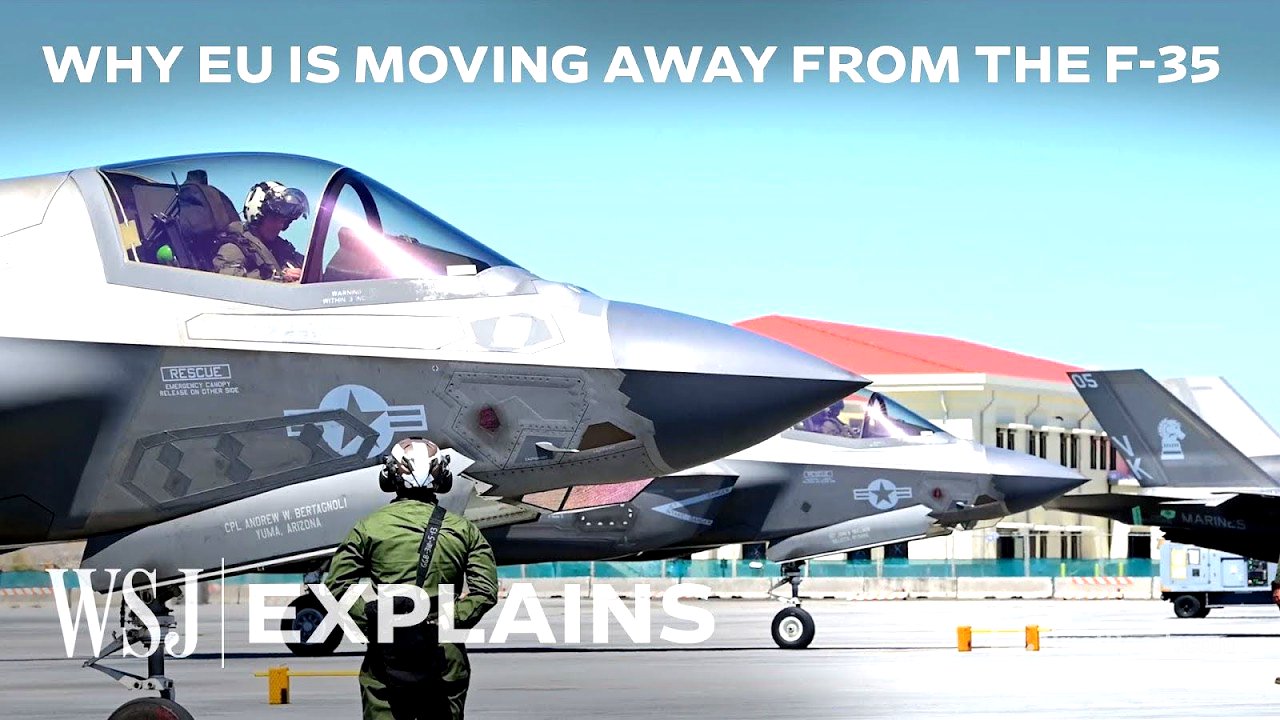TLDR;
This video examines the F-35 program, one of the world's most expensive weapons programs, and its dominance in the global arms trade. It explores the factors that threaten the F-35's position, including political pressure from the US, competition from European jets, and the development of next-generation aircraft. The video also touches on the concerns surrounding the program's escalating costs and the potential impact of unmanned aircraft.
- The F-35 program is projected to cost the US over $2 trillion.
- Political pressure from the US and concerns about reliance on American weapons are causing some countries to rethink their dependence on the F-35.
- European jets and next-generation aircraft pose a competitive threat to the F-35.
The F-35 program [0:00]
The F-35 program is identified as one of the most expensive weapons programs globally, projected to cost the US over $2 trillion over the next five decades. It highlights the program's success as a US export, contributing significantly to America's dominance in the arms trade. However, the narrator notes that pressure tactics employed by President Trump on US allies have led some countries to reconsider their reliance on American weaponry. This shift, coupled with technological advancements and competition from both US and European jets, poses a threat to the F-35's current dominance in the market.
What buying an F-35 means [0:37]
Purchasing a fighter jet, such as the F-35, signifies more than just acquiring a single aircraft; it represents a commitment to a future relationship with the selling country. The cost of an F-35 is approximately $82 million per unit, varying based on the model and quantity purchased. Buyers are also obligated to pay Lockheed Martin, the manufacturer, for ongoing maintenance, pilot training, spare parts, and software updates. This establishes a long-term dependency on the US for the upkeep and operation of the aircraft.
Trump’s attacks and Europe’s response [1:02]
President Trump's temporary pause of intelligence sharing with Ukraine has raised concerns among countries dependent on the US for maintaining their F-35s. This action has prompted nations to question the reliability of US support, fearing potential disruptions in supply and updates. Concerns have also surfaced regarding a hypothetical "kill switch" on the F-35, which the US could use to disable the jets. Although the US government and Lockheed Martin deny the existence of such a feature, the US could still exert considerable influence by withholding spare parts, expertise, and software updates, creating significant challenges for any country that falls out of favour with the US. Canada, for example, has announced a review of its planned acquisition of 88 F-35s due to changing geopolitical dynamics and a desire to bolster domestic defence production.
European rival jets [2:21]
Europe produces three main types of fighter jets: the Eurofighter, built by a coalition of companies from the UK and the EU; the Rafale, manufactured by France; and the Gripen, produced by Sweden. While these jets have achieved global sales, the F-35 is considered a generation ahead due to its stealth technology and advanced sensors. Despite this, European fighters are combat-tested and highly capable aircraft. The key advantage of the F-35 lies in its radar-evading technology. Since its launch in 2015, the F-35 has surpassed its European rivals in sales and pre-orders. European jets are popular in the Middle East, often because the US restricts the sale of its top-tier fighter jets to maintain Israel's technological advantage over its neighbours.
F-35 challenges ahead [3:33]
While the F-35 remains a popular choice, experts believe its manufacturer faces several challenges. These include potential decreased demand from the US due to the program's escalating costs. The Department of Defence plans to increase its fleet to approximately 2,500 aircraft by the mid-2040s, with the cost of sustaining this fleet accounting for nearly 80% of the program's projected $2 trillion cost. The development of Boeing's next-generation F-47 jet fighter poses a risk to Lockheed Martin, potentially cannibalising the F-35 market. Concerns have also been raised about the F-35's future in light of unmanned aircraft. Lockheed Martin is addressing these concerns by developing a combat drone system where F-35s operate alongside unmanned craft. European companies are also developing next-generation jets like the Tempest (developed by the British, Italians, and Japanese) and the FCAS (a collaboration between the French, Germans, and Spanish). These new jets are expected to reduce demand for US aircraft. The development of a new jet fighter takes decades, but the arrival of these latest-generation aircraft means increased competition for the F-35 is on the horizon.









